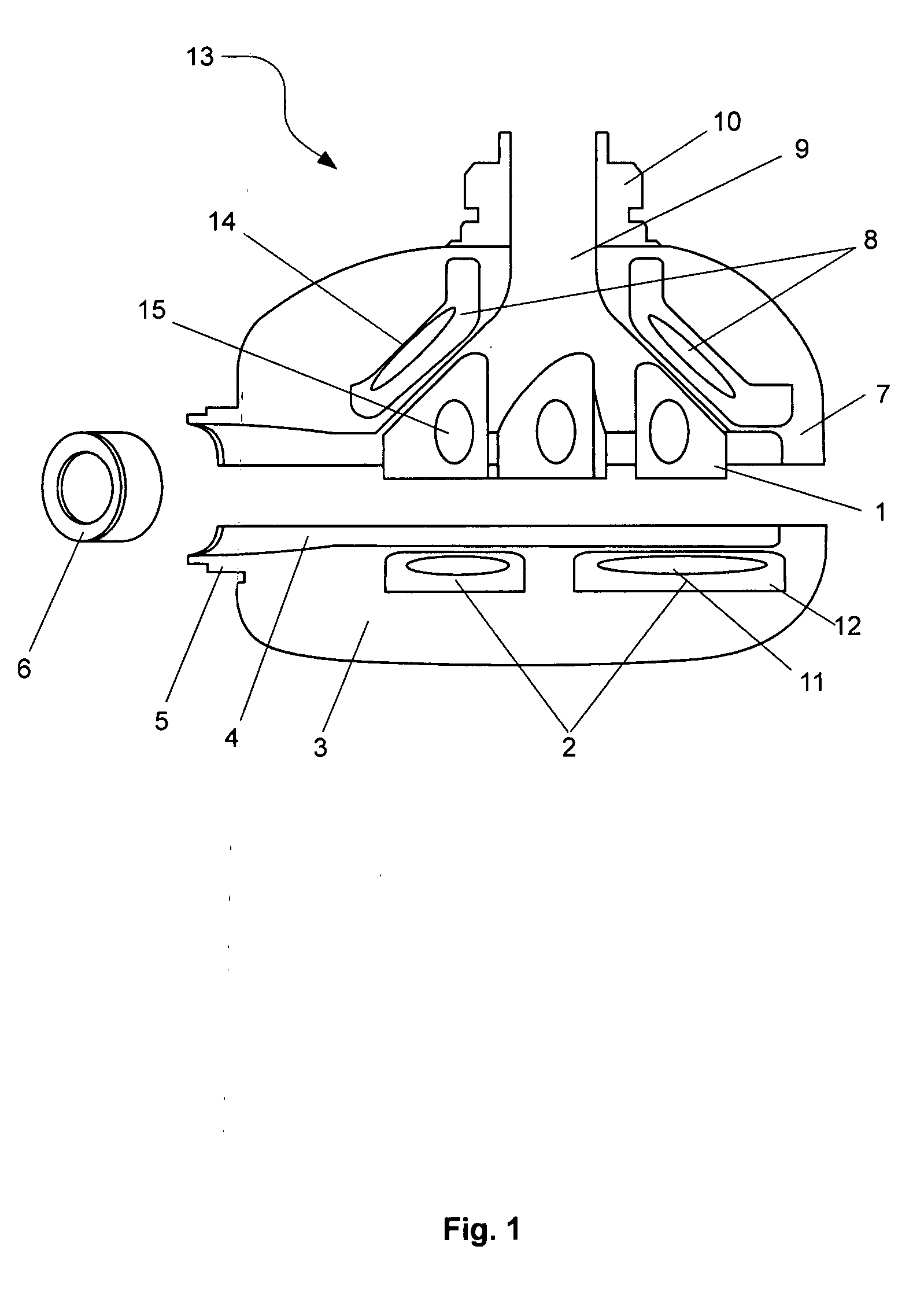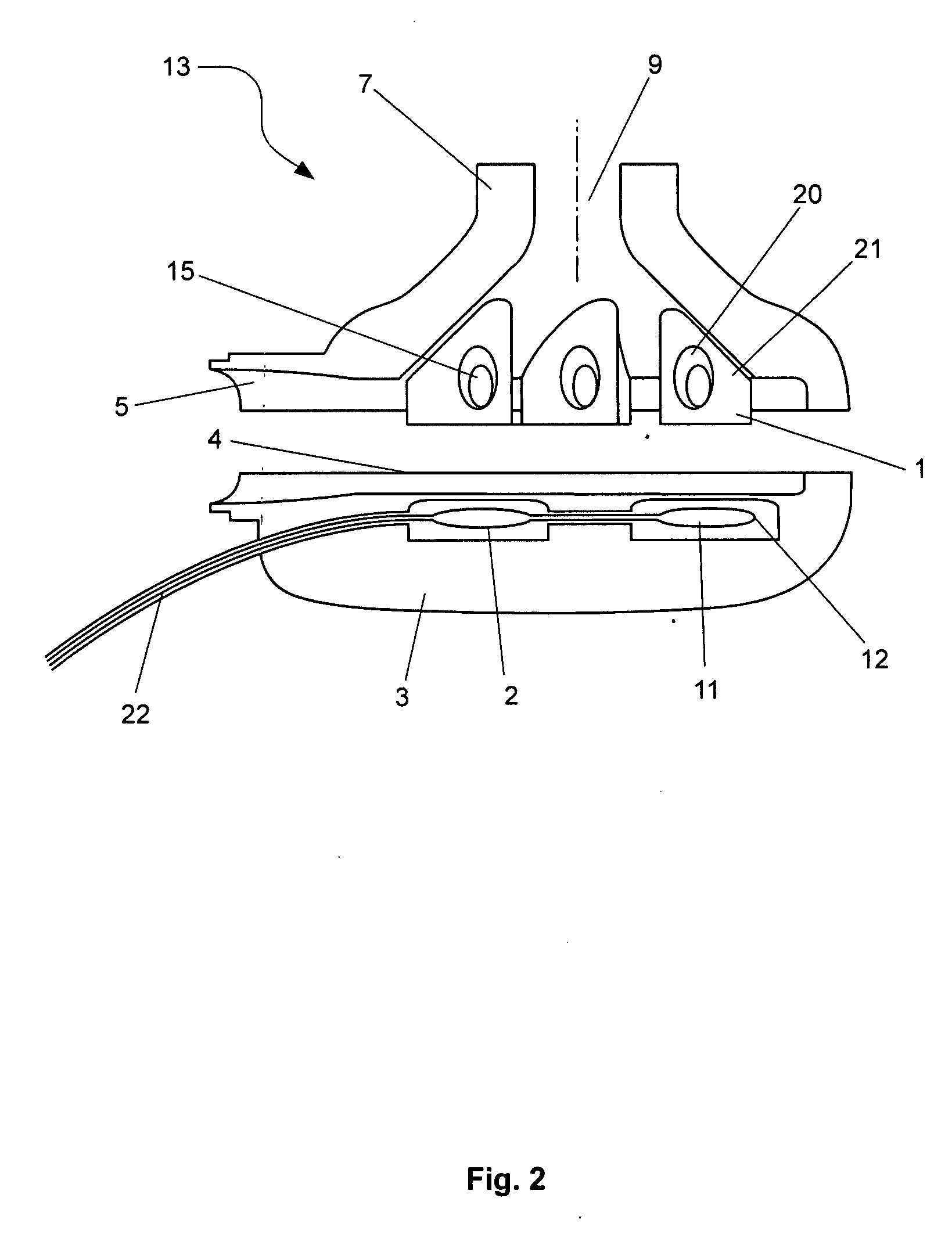Polymer encapsulation for medical device
a technology of medical devices and polymers, applied in circulatory assistance devices, therapy, heart stimulators, etc., can solve the problems of low fluid permeability, inability to meet the needs of patients, and inability to withstand prolonged use, so as to prevent component leakage
- Summary
- Abstract
- Description
- Claims
- Application Information
AI Technical Summary
Benefits of technology
Problems solved by technology
Method used
Image
Examples
first embodiment
[0035]In this first embodiment, the impeller is preferably constructed from a titanium alloy. The advantage with using a titanium alloy is that it has the mechanical stability, biocompatibility and general dimension stability which are critical for use with hydrodynamic bearings on the outer edges of the impeller 1. The impeller 1 preferably includes four blades mounted in a general circular arrangement and each of the blades has a general shark fin shape, as per FIG. 1. Each blade includes a permanent magnet 15 which interacts with the energised stator coils 2 and 8 in the base and upper housing portions 3 and 7. Typically, the permanent magnets 15 are constructed from neodymium-iron-boron magnets or rare earth magnets. In addition, the use of titanium alloy at approx 500 micron thickness allows for the blade enclosures to maximise the volume of magnet material enclosed, which contributes to motor efficiency.
[0036]A second preferred embodiment of the present invention is depicted i...
third embodiment
[0041]A third embodiment would be to construct the rotor from polymer in a similar manner to the housing. The permanent magnets 15 are encapsulated within each blade of the impeller 1. Since the magnet material is prone to corrosion, an option would be to coat the permanent magnets 15 with parylene prior to encapsulation to provide a thin, highly conformal, pin-hole free moisture-resistant barrier. Forms of parylene are stable at relatively high temperatures (melting point 400° C. and above) and biocompatible. They would thus be stable when exposed to further injection moulding steps. For further moisture protection, the magnet, in the parylene-coated or the non-coated form, is then encapsulated within a layer of the first polymer 20 which is relatively fluid resistant and the first polymer is injection moulded within a second polymer, which may be a poly-ether 21 or PTFE. Additives may be mixed with the second polymer to increase its dimensional stability and to prevent warping or ...
PUM
 Login to View More
Login to View More Abstract
Description
Claims
Application Information
 Login to View More
Login to View More - R&D
- Intellectual Property
- Life Sciences
- Materials
- Tech Scout
- Unparalleled Data Quality
- Higher Quality Content
- 60% Fewer Hallucinations
Browse by: Latest US Patents, China's latest patents, Technical Efficacy Thesaurus, Application Domain, Technology Topic, Popular Technical Reports.
© 2025 PatSnap. All rights reserved.Legal|Privacy policy|Modern Slavery Act Transparency Statement|Sitemap|About US| Contact US: help@patsnap.com



